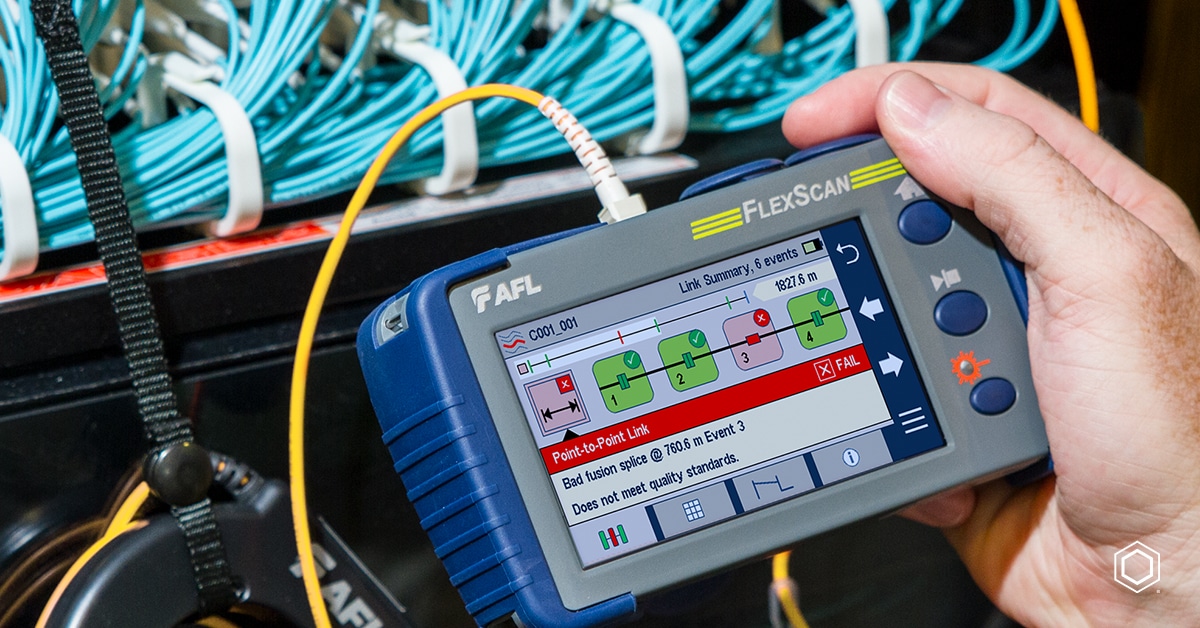Improve efficiency with state-of-the-art robotic vision systems.
Improve efficiency with state-of-the-art robotic vision systems.
Blog Article
Unveiling the Key Use Optical Fiber Examining for Efficient Information Transmission
In the world of contemporary communication, optical fibre screening emerges as an essential method for optimizing data transmission. Understanding the diverse applications of optical fibre screening welcomes a deeper expedition into its pivotal duty in forming the future of data interaction.

Importance of Optical Fibre Testing
The value of optical fiber testing can not be overemphasized, as it functions as an essential part in ensuring the reliability and effectiveness of data transmission systems. In an age where high-speed interaction is paramount, any type of shortages in fiber optics can cause considerable information loss and reduced performance. For that reason, extensive screening procedures are necessary to confirm the stability and efficiency of optical cables.
Evaluating enables the identification of problems such as micro-bends, macrobends, and splice losses that can hinder signal quality. Moreover, it provides understandings into the general depletion and transmission capacity capacities of the fibre, making sure that the network fulfills certain functional requirements. Normal screening not just enhances system efficiency but likewise lengthens the life expectancy of the framework by recognizing possible problems before they intensify into pricey failures.

Kinds of Optical Fibre Examinations
Different types of optical fibre examinations are performed to make certain the efficiency and reliability of fibre optic networks. These examinations can be categorized into several vital kinds, each offering a specific objective in evaluating the integrity of the fibre.
First, Optical Time Domain Reflectometry (OTDR) is a famous test that identifies mistakes, splices, and adapters within the fiber. By sending pulses of light and assessing the shown signals, technicians can identify problems along the fiber's size.
Second, insertion loss examinations review the quantity of signal loss when light travel through ports or splices, which is essential for maintaining network effectiveness.
Third, return loss tests measure the amount of light showed back towards the source, offering insights into the quality of connections and potential resources of disturbance.
Furthermore, continuity examinations guarantee that the fibre path is full, permitting technicians to confirm that the fibre is intact without any type of breaks. fibre testing equipment.
Last but not least, visual fault locators make use of noticeable light to identify breaks or serious bends in the fiber, assisting in quick troubleshooting. Jointly, these examinations form a comprehensive technique to keeping optimal efficiency in fibre optic networks.

Applications in Network Maintenance
In contemporary telecommunications, effective network maintenance depends greatly on optical fibre testing to identify and rectify concerns quickly. Normal testing makes sure that the network runs at ideal efficiency degrees, reducing downtime and improving individual experience.
Among the key applications of optical fiber screening in maintenance is the discovery of faults, such as breaks, flexes, or improper connections. Strategies like Optical Time Domain Reflectometry (OTDR) allow service technicians to locate these issues precisely and assess the quality of the fibre link. In addition, loss testing validates the stability of the optical path, guaranteeing that signal depletion continues to be within appropriate limits.
Routine maintenance testing likewise assists in safety nets, identifying possible troubles prior to they escalate right into significant failings. This aggressive method can conserve organizations both time and economic resources. During upgrades or growths, optical fibre testing ensures that brand-new setups incorporate flawlessly with existing facilities.
Enhancing Data Transmission Reliability
Efficient network upkeep through optical fibre screening not just addresses immediate problems yet also plays a substantial role in improving information transmission integrity. By identifying faults, determining signal loss, and assessing the general problem of fiber optic cords, screening ensures that prospective issues are fixed prior to they escalate into considerable interruptions.
Normal optical fiber screening, such as time-domain reflectometry (TDR) and optical time-domain reflectometry (OTDR), permits technicians to identify the precise places of breaks, bends, or connector problems within the network. This positive strategy not just minimizes downtime but likewise enhances the performance of data transmission by making sure that the paths for signals are clear and operating successfully.
In addition, screening help in confirming adherence to market requirements and specs, which is vital for keeping the stability Get More Information of data flow. By guaranteeing that each connection fulfills called for limits for loss and top quality, companies can strengthen their self-confidence in the dependability of their data networks.
Ultimately, investing in extensive optical fibre screening not just improves data transmission reliability but also sustains the long-lasting operational efficiency of interaction facilities.
Future Trends in Fibre Screening
Emerging technologies are positioned to reinvent fiber screening, leading the way for boosted effectiveness and accuracy in data transmission diagnostics (ofda). As the need for faster net and greater data transfer proceeds to increase, the integration of innovative tools such as artificial knowledge (AI) and artificial intelligence (ML) is established to transform traditional fibre testing methods. These modern technologies will make it possible for predictive upkeep and automated fault discovery, substantially decreasing downtime and boosting network reliability
In addition, the adoption of Net of Things (IoT) gadgets will certainly assist in real-time surveillance of fibre networks, permitting for immediate recognition of efficiency issues. This change towards aggressive management will decrease disruptions and enhance information flow.
Moreover, innovations in optical time-domain reflectometry (OTDR) and new screening requirements will certainly improve the precision of dimensions, ensuring that data stability is kept throughout the transmission process. The introduction of 5G innovation additionally necessitates the advancement of much more advanced fiber testing methods to sustain its high-speed needs.
Verdict
In conclusion, optical fibre screening is crucial official statement for maintaining efficient data transmission within communication networks. By employing different testing methods, such as OTDR and insertion loss examinations, prospective mistakes can be recognized and fixed, therefore enhancing signal clarity and reducing downtime. Routine testing not only makes sure compliance with market requirements however likewise helps with positive maintenance, ultimately adding to the lasting dependability and performance visite site of fiber optic systems. The ongoing development of screening methods will even more reinforce these capabilities in the future.
Report this page